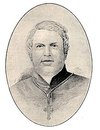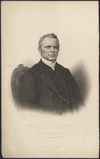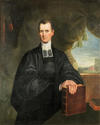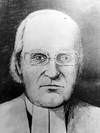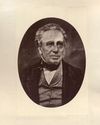the settlement of the Huron Tract and a view of the social life of the period, 1825–1850 (Toronto et Montréal, 1896).— Robertson’s landmarks of Toronto, V.— Wilson, Clergy reserves of
), pp.611–613.— Hibbert Binney, Remarks on diocesan synods, addressed to the clergy and laity of his diocese (Halifax, 1864).— Church of England, Diocese of Nova Scotia
efficace. Enfin constituée en 1819, l’Upper Canada Clergy Corporation comprenait l’évêque de Québec, le clergé de l’Église d’Angleterre dans le Haut-Canada, ainsi que l’inspecteur général et l’arpenteur
[...] on the bill for appropriating the proceeds of the clergy reserves to the purposes of general education [...] (Toronto, 1837).
S. E
., Coll., XXII (1933) : 73–95.-L. M. Toward, The influence of Scottish clergy on early education in Cape Breton, N.S. Hist. Soc., Coll., XXIX
Presbyterian Witness, 30 avril 1898.— John Murray, The history of the Presbyterian Church in Cape Breton (Truro, N.-É., 1921).— L. M. Toward, The influence of Scottish clergy on
letter [...] to the clergy and laity of the diocese of St. John’s, on his return from the Eternal City, where lie had been on the occasion of the canonization of the Japanese martyrs (St
secrétaire-receveur de l’Upper Canada Clergy Corporation qui gérait la location des « réserves » du clergé. Au cours de la même année, il devint secrétaire-archiviste à King’s College, institué en
une tradition fortement congrégationaliste, lui décerna un doctorat en théologie en 1854. En 1850, Lillie avait été un des fondateurs de l’Anti-Clergy Reserves Association et, au cours des années 60, il
Strachan, archidiacre de l’Église d’Angleterre qui deviendra plus tard évêque de Toronto, et de l’Upper Canada Clergy Corporation, mais en échange se vit octroyer le Huron Tract, région
.
John Irwin Cooper
Francis Fulford, A letter to the bishops, clergy, and laity of the United Church of England and Ireland in
. Mountain, A charge delivered to the clergy of the diocese of Quebec at the triennial visitation, [...] on 1st July 1862 (Québec, 1862) ; A journal of
, 1962).— G. C. M. Smith, The life of John Colborne, Field-Marshal Lord Seaton, G.C.B., G.C.H., G.C.M.G., K.T.S., K.St.G., K.M.T. [...] (Londres, 1903).— Wilson, Clergy
.]
A brief sketch of the life and labours of Archdeacon Cockran (Londres, s.d.).— J. E. Foster, The Anglican clergy in the Red River Settlement, 1820–1826 (thèse de
« colons protestants des régions voisines » de Lévis. En 1833, il était aumônier suppléant de la garnison de Québec et, en 1839, il devint secrétaire de la Clergy Réserves Corporation, qui s’occupait de
George Brown, de l’Anti-Clergy Reserves Association, créée en 1850. Il prétendait que les « réserves » du clergé, qui ne servaient presque uniquement qu’à l’Église d’Écosse et à l’Église
publia A letter ; most respectfully addressed to the Roman Catholic clergy and the seigniors of the province of Lower Canada : recommending the establishment of schools. Il y exprimait
d’anglicans que de presbytériens. Mais Morris sut se faire une raison. Le droit des deux Églises à une rente égale avait été admis, et il persuada son Église d’accepter le Clergy Reserves Act de
important dans la création de l’Upper Canada Clergy Corporation, organisme d’anglicans qui superviserait et administrerait les terres. La même année, après qu’une congrégation presbytérienne du district
: the British experience, 1759–1856 (Londres et Basingstoke, Angl., 1976) ; [G.] A. Wilson, The clergy reserves of Upper Canada, a Canadian mortmain (Toronto, 1968






